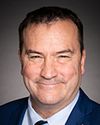Just to be clear, I do not expect to ask for additional funds from the annual vote, which is for the permanent staff, so that will remain. I don't think I will be needing additional money there.
For the rest of the statutory authority, I am not required to go through Parliament. In the past we have sometimes made projections through the supplementary estimates in terms of transparency. In recent years, the Treasury Board has indicated that we need not go there, that typically our amounts are not sufficiently material to go through the estimates, so I don't know how that will take place this year. They are only there for transparency reasons.
I'd like to come back to your initial question because there are a few elements to it. The first point I would make before I go there, however, is that the estimates were submitted not only prior to the pandemic but prior to the results of the last election. Therefore, the minority status was not factored in.
There are two aspects. What was factored in was $85.5 million. I can break that down a little bit. If you look at that, there is, for example, $9 million for licences and leases, $15 million for the salaries of terms and casuals, and $17 million for professional services. There is also money related to the last election in there, so there are expenses that were still being paid in this fiscal year for the last general election.
If you look, then, at the $99 million I indicated in my remarks, there's $52 million for, essentially, protective measures and adaptations for the pandemic. The balance of that, the main items—and I'd be happy to provide details to the committee—has $7.3 million to deploy hardware in regional offices. That's the package, including all of the IT equipment that's used in our offices, the installation of the software and deploying it locally. There's also a Canada Post monthly fee to maintain that in the local so that we're ready if an election is called.
We have $7.5 million in expenses for returning offices, regional meetings, training and special assignments, such as engaging with indigenous communities and engaging with long-term care facilities.




